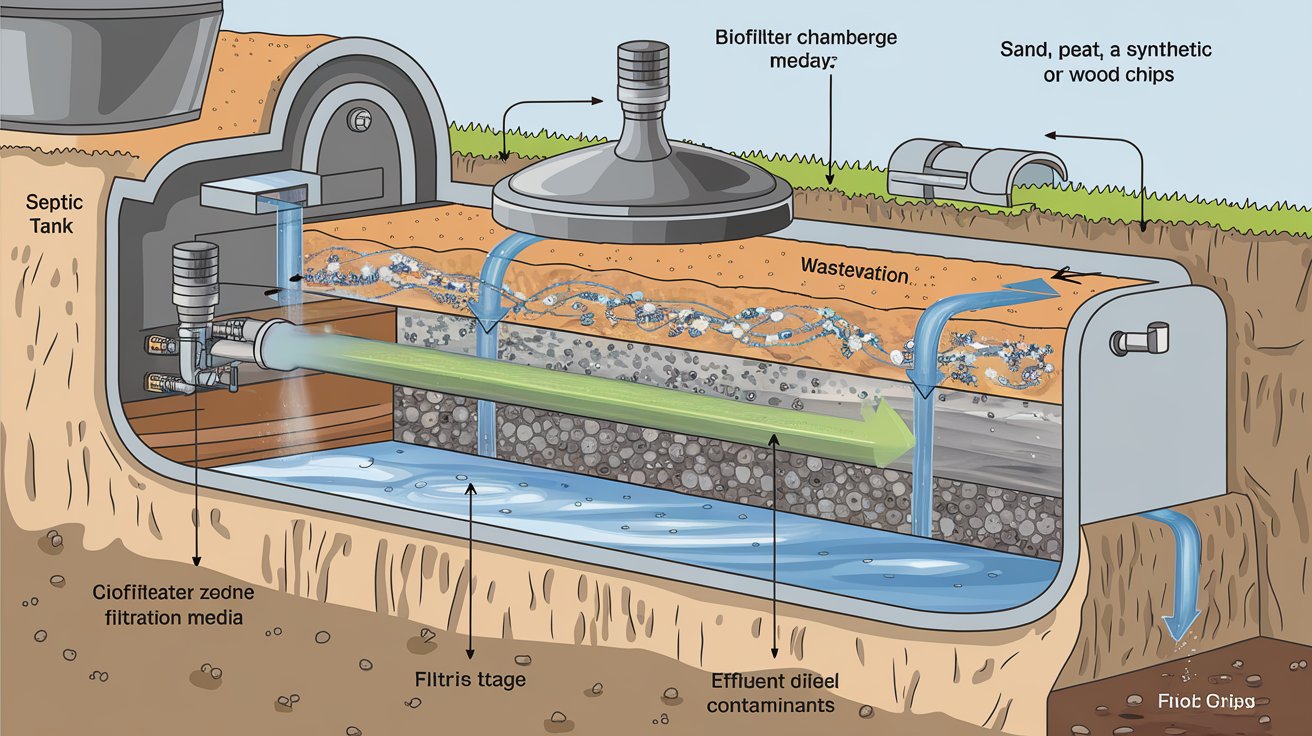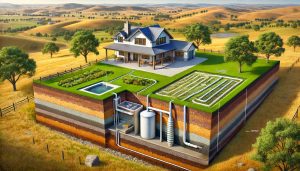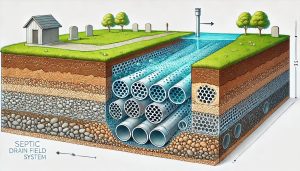Biofilters for septic systems play a crucial role in improving wastewater treatment efficiency and protecting the environment. These systems use natural or synthetic materials to filter and break down contaminants before wastewater reaches the soil or groundwater. With growing environmental concerns and stricter wastewater regulations, biofilters have become a critical component of modern septic technologies. In this article, we’ll explore biofilters in-depth, including their mechanisms, benefits, types, installation, and long-term maintenance.
Table of Contents
- What Are Biofilters for Septic Systems?
- How Do Biofilters Work?
- Types of Biofilters for Septic Systems
- Benefits of Using Biofilters in Septic Systems
- Installation and Maintenance of Biofilters
- Regulations and Guidelines for Biofilters
- Common Myths About Biofilters
- Frequently Asked Questions (FAQs)
- Septic Permit Links by State
What Are Biofilters for Septic Systems?
Biofilters are advanced wastewater treatment systems that utilize biological and physical processes to filter contaminants from septic system effluent. They consist of porous materials, such as sand, peat, or synthetic media, which provide an ideal environment for beneficial microorganisms to thrive. These microorganisms actively break down organic matter, pathogens, and other pollutants, reducing environmental risks. Biofilters are particularly effective in protecting groundwater resources and ensuring septic systems comply with health and safety standards.
How Do Biofilters Work?
Biofilters operate through a combination of filtration, biodegradation, and chemical transformation. The process involves multiple steps:
- Filtration: Wastewater passes through layers of biofilter media, trapping solid particles and large contaminants.
- Biodegradation: Beneficial microorganisms colonize the media and consume organic waste, breaking it down into less harmful byproducts.
- Chemical Reactions: Certain biofilter media can also facilitate chemical reactions that neutralize specific contaminants, such as nitrogen compounds.
- Polishing Stage: The final stage removes residual impurities, ensuring the effluent meets safety standards before being discharged into the soil.
This intricate process minimizes pollutant levels and prevents harmful substances from reaching the environment.
Types of Biofilters for Septic Systems
Biofilters come in different types, each suited to specific septic system needs and environmental conditions.
Sand Biofilters
Sand biofilters are one of the oldest and most widely used systems. They use fine-grained sand as the primary filtration media. Sand biofilters are cost-effective, require minimal maintenance, and are suitable for small-scale residential septic systems.
Peat Biofilters
These are layers of natural peat moss to filter and treat wastewater. Peat is highly absorbent and provides an ideal habitat for microorganisms. While effective, peat biofilters require periodic media replacement, adding to long-term costs.
Synthetic Media Biofilters
Synthetic biofilters use engineered materials like plastic or foam media to facilitate efficient wastewater treatment. They are highly durable, less prone to clogging, and have a longer operational lifespan compared to natural media filters.
Wood Chip Biofilters
Wood chip biofilters offer an eco-friendly and cost-effective solution, using wood chips to create a habitat for bacteria that break down contaminants. These systems are especially useful in areas with ample wood resources.
Benefits of Using Biofilters in Septic Systems
Biofilters provide numerous environmental, economic, and operational benefits:
- Superior Treatment Efficiency: They effectively remove organic matter, pathogens, and nitrogen compounds.
- Groundwater Protection: Prevent pollutants from seeping into groundwater sources.
- Eco-Friendly Solution: Reduced reliance on chemical treatments.
- Cost Savings: Long-term reduction in septic system failures and costly repairs.
- Adaptability: Suitable for residential, commercial, and remote applications.
- Compliance: Help meet regulatory requirements for wastewater treatment.
Installation and Maintenance of Biofilters
Proper installation and routine maintenance are essential for the effectiveness of biofilters.
Installation Process
- Site evaluation to determine the appropriate biofilter type.
- Proper design and sizing based on wastewater volume.
- Installation of media layers and drainage systems.
- Integration with existing septic infrastructure.
Routine Maintenance
Regular inspections to prevent clogging and overloading.
- Cleaning or replacing biofilter media as needed.
- Monitoring microbial activity for optimal filtration.
Troubleshooting Common Issues
- Media saturation causing reduced performance.
- Reduced microbial activity due to harsh chemicals.
- Structural damage leading to leaks.
Regulations and Guidelines for Biofilters
Different states and regions have specific regulations governing the installation and maintenance of biofilters in septic systems. Compliance is critical to avoid fines and ensure the long-term effectiveness of the system. Guidelines typically cover:
- Media selection and quality.
- Installation standards.
- Maintenance schedules.
- Performance monitoring and reporting.
Common Myths About Biofilters
Myth: Biofilters are prohibitively expensive.
- Truth: While initial costs can be higher, biofilters save money in the long run through reduced maintenance.
- Myth: They require constant monitoring.
- Truth: Routine inspections are sufficient to ensure proper functioning.
- Myth: Biofilters only work in warm climates.
- Truth: Many modern biofilters are designed to perform effectively in cold environments.
Conclusion
Biofilters are a powerful and sustainable solution for improving wastewater treatment in septic systems. Their ability to efficiently filter contaminants, protect groundwater, and meet regulatory requirements makes them an essential component of modern wastewater management strategies. Investing in biofilter technology is an investment in environmental safety, cost efficiency, and long-term sustainability.
Frequently Asked Questions (FAQs)
How long do biofilters last in a septic system
Biofilters typically last between 10 and 20 years, depending on the type of filter media, system design, and level of maintenance. Synthetic biofilters generally have a longer lifespan compared to natural media like peat.
Are biofilters suitable for all septic systems?
Most septic systems can integrate biofilters, but suitability depends on soil conditions, available space, and wastewater volume. A professional assessment is essential for determining compatibility.
How often should biofilters be maintained?
Routine maintenance, including inspections, should occur annually. Depending on usage and media type, cleaning or media replacement may be required every few years.
Do biofilters eliminate septic odors?
Yes, biofilters effectively reduce or eliminate odors by breaking down organic matter and preventing the buildup of odor-causing gases.
Are biofilters environmentally friendly?
Absolutely. Biofilters rely on natural biological processes to treat wastewater, minimizing the need for harsh chemical treatments and reducing environmental impact.









